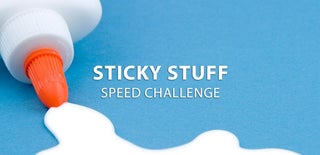Introduction: Bamboo & Resin Coasters
Need somewhere to place your drinks without leaving a mark on the table.
Well leave the mark on a coaster.
This project presents a method to create your own coasters using bamboo skewers and resin.
Supplies
Bamboo skewers - 30 cm x 3 mm, qty ~50 plus spares subject to number of skewers employed.
Baking tray - 30 x 18 x 3 cm (or other suitable tray).
Cling film (Food wrap) and/or suitable release agent. (Olive oil works and will give the resin a golden sheen.)
Clear Epoxy Resin. I used Resin4Decor 2:1 mix (No affiliation).
Circular hole cutter - 95 mm diameter
Sanding paper
Acrylic Polish or similar
Adjustable clamps - qty 2 min
Sacrificial board or plank offcut.
Bench Drill.
Step 1: Preparation
Prepare the tray by lining with cling film (food wrap).
This is to prevent the resin from sticking inside that tray and preventing its removal and substitutes for a release agent.
(However, if you have a plastic tray or silicone mould of the required size this may be substituted).
The film will likely wrinkle when used to line tray, rather than trying to eliminate this it can be used to pattern the surface of the coaster.
Step 2: Resin Pour
Having prepared the tray and the resin its time to add both the resin and the skewers.
Based on the specified tray size, mix ~400g (two mixes 240g + 160g in my case) of clear epoxy resin which in conjunction with the skewers will make coasters ~ 1cm thick.
I poured the resin first then added the skewers one by one aligned next to each other using a spare skewer to position any skewers that floated out of alignment. Initially submerge each skewer to ensure an even coat and to reduce the occurrence of gaps in the resin they will float back to the surface.
Different patterns can be realised by arranging the skewers differently, cutting into smaller sections and layering.
If any skewers have splinters these will become more pronounced once in the resin due to expansion by absorption of resin. Therefore, remove any splinters and/or sand the area flush or if you have plenty of skewers you can just replace them to save time.
Also if any skewers are excessively curved or bent they are remove and replaced with straighter ones.
I just created one layer of aligned skewers one by one until the end of the tray for a total of 45.
Its then just a case of leaving it for the recommended resin curing time.
Step 3: Slab Removal
Once the resin has cured its time to remove the slab from the tray.
I did this by inverting the open tray face down on a flat surface and tapping or pressing firmly on the back with the palm of your hand at which point the slab should fall out.
If it proves difficult to remove place it in the freezer overnight, remove and cover with a cloth and plunge into hot water. Being sure to wear gloves and safety glasses against temperature extremes and should the slab crack. Although, the cloth should contain any pieces and skewers should reduce the likelihood as they will bind the resin.
Next peel off the cling film if you used it. Don't worry if the cling film resists removal at the stage.
Step 4: Cutting
This is the stage were I will cut out the coaster from the slab.
You will need a bench drill and a 95mm circular hole cutter.
The hole cutter I had was of the type were it has a drill bit in the centre to align the hole cutter.
However, I did not want a hole in the centre of each coaster.
Therefore, I inverted the drill bit and reattached it, hence the requirement for a bench drill which prevents the cutter skating across the surface.
I clamped the slab to a sacrificial piece of wood on the drill platform under the cutter.
Not forgetting PPE prior to starting the job.
Once cutting is initiated do this slowly as the resin can overheat becoming gummy and clogging the cutter.
Retracting the cutter regularly to reduce heating and if necessary to remove any resin stuck to the cutter.
Continue until the disc detaches from the slab, it will likely be lodged inside the cutter.
Remove and place to one side.
Continue the process until the remaining three coasters are cut out for a total of 4.
Four coasters assuming that the slab was 30 x 18 cm.
Step 5: Smoothing
Depending on the cutting process which will determine the quality of the edge this will dictate what level of smoothing will be required.
There may be some splintering of the skewers at the edges which can be removed by filing and/or sanding followed by coat of vanish
You may even tape or glue an edging around the perimeter if so inclined.
Step 6: Polishing
If there are any remnants of cling film this is the stage to finally remove them.
Give the top surface (skewer side down), a hand buff with a suitable acrylic polish.
The abrasion with the cloth will lift the cling film from the surface.
If machine polishing is applied beware of overheating which will mar the surface.
Step 7: Relax.
At this point have a beverage you deserve it and at the same time try out your new coasters.
Hope you found this process informative.

Participated in the
Sticky Stuff Speed Challenge













